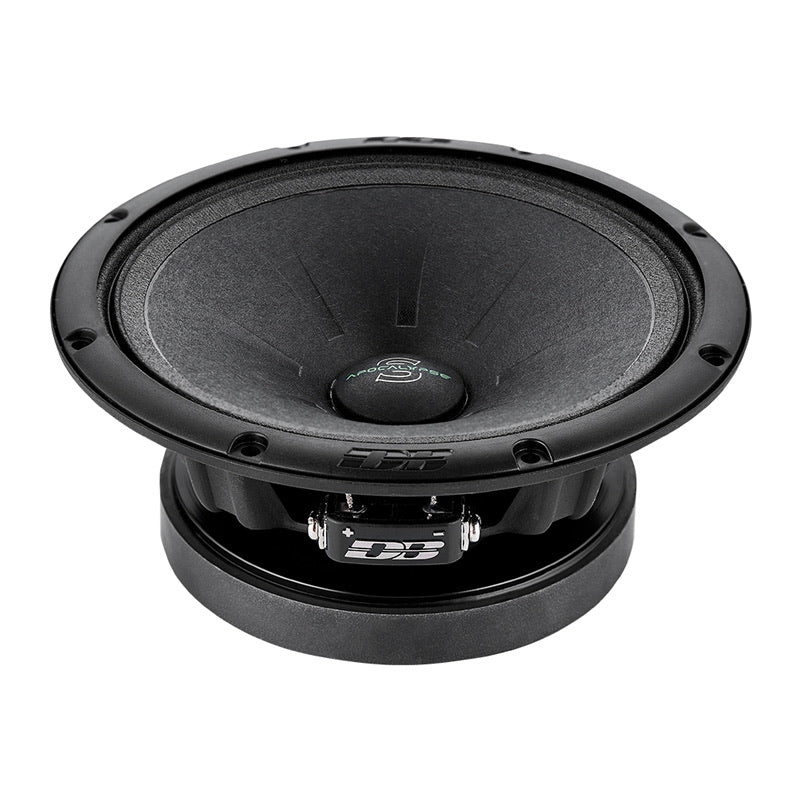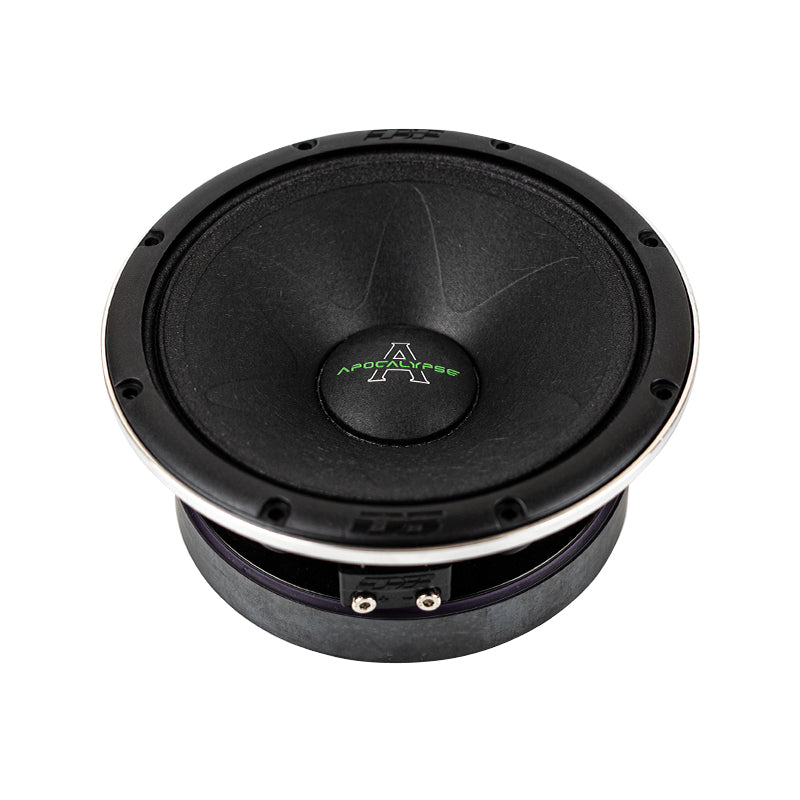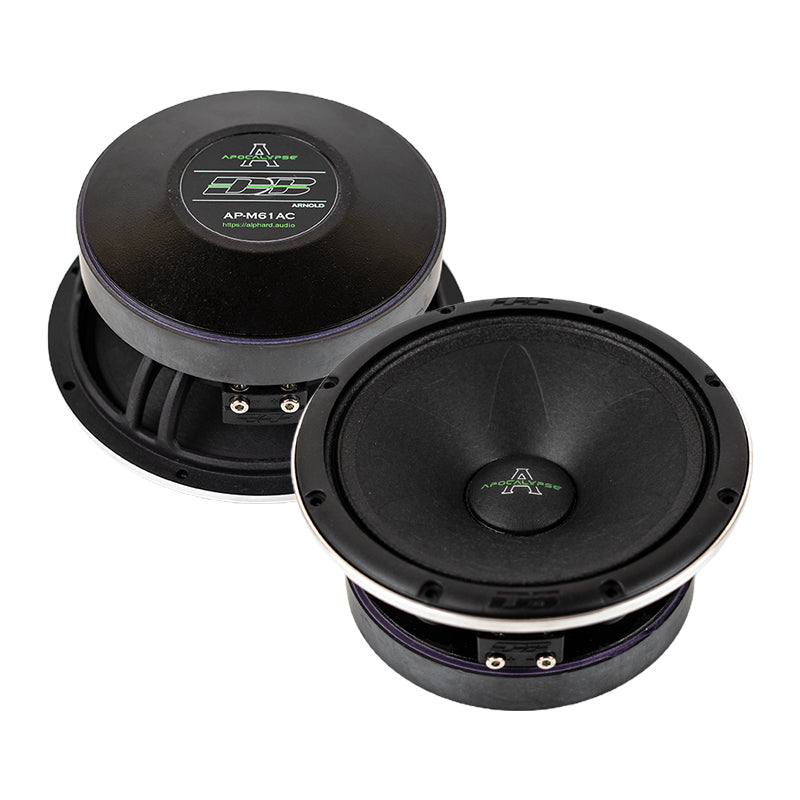Building or upgrading a car audio system can feel overwhelming when faced with numbers and terms like RMS power, sensitivity, impedance, or frequency response. These car audio specifications will decide how well your speakers and amplifiers will perform, but to many beginners, they look more like math problems than music. By understanding what these ratings mean, will help you choose the right components and get the best sound for your setup.
How Do Car Speakers Work?
It is best to understand how this works out when you press play, before drowning in the numbers. A car speaker translates electrical energy of the amplifier into vibration which forms sound waves. Inside, a voice coil moves back and forth inside a magnetic field, pushing and pulling the speaker cone. This movement causes a change in pressure in air and this change is perceived by your ears as sound.
Different sizes and designs of speakers give different results. Small tweeters are used to reproduce high frequencies such as vocals and cymbals, midrange speakers are used to reproduce instruments and detail, and larger woofers or subwoofers are used to move more air to create deep bass. The effectiveness of each of these parts is determined by the quality of the materials and the way each one connects to the power of your amplifier.
Car Audio Specs Explained
When you are buying car speakers or amplifiers, you will find a very long list of specifications. They all narrate a portion of the performance of the component. The most important specifications that every beginner must be aware of are outlined below.
RMS Power Rating
RMS (Root Mean Square) measures the continuous power a speaker or amplifier can handle without damage or distortion. It represents real-world performance, not the short bursts shown by “peak power” ratings.
For example, a speaker rated at 60 watts RMS can safely handle 60 watts of continuous power from an amplifier. Matching amplifier output to RMS ratings ensures clear, balanced sound and prevents overheating or blown speakers.
Peak Power Rating
Peak power describes the maximum amount of energy the speaker can handle for short bursts. It’s often used as a marketing number and doesn’t reflect how the system performs during every day listening. Focus more on RMS than peak when comparing products.
Sensitivity
Sensitivity shows how efficiently a speaker converts power into volume. It’s measured in decibels (dB) with 1 watt of power at 1-meter distance. A higher number means the speaker plays louder using less power.
For example, a speaker with 90 dB sensitivity will sound louder than one rated at 85 dB when powered by the same amplifier. Understanding RMS vs sensitivity helps you decide whether to prioritize efficiency or power handling in your build.
Impedance
Impedance measures electrical resistance and is expressed in ohms (Ω). Most car speakers operate at 4 ohms, though some subwoofers are 2 or even 1 ohm. The key is matching your amplifier’s output impedance to your speakers. Mismatched resistance can cause weak sound or amplifier strain.
Frequency Response
This spec tells you how wide a range of tones the speaker can reproduce. For example, 40 Hz to 20 kHz covers deep bass to crisp treble. While a wider range often sounds better on paper, tuning and speaker placement matter just as much. A properly tuned speaker within a modest range can outperform one with flashy specs but poor installation.
Signal-to-Noise Ratio (SNR)
SNR measures how much actual audio signal exists compared to background noise. A higher SNR (like 90 dB or more) means cleaner sound. This rating is especially important for amplifiers and head units, where low noise contributes to a more refined listening experience.
Choosing the Right Car Speaker Sizes
Car speaker sizes affect not only how much sound your system can produce but also how well different frequencies blend together. Standard sizes include 6.5-inch for doors, 6x9-inch for rear decks, and smaller tweeters for the upper dash or A-pillars.

Here’s a simple overview of how sizes affect sound:
-
3.5" to 4" – Designed for dash or corner mounts; handle high frequencies.
-
5.25" to 6.5" – Common for midrange and general use; provide balanced sound.
-
6x9" – Ideal for fuller bass response and higher volume.
-
8" and above – Usually subwoofers, built for low-end power.
Choosing sizes depends on your vehicle’s factory locations and how much modification you’re willing to do. Always confirm depth and mounting dimensions before purchase.
Matching Components Correctly
A great audio system comes from pairing compatible audio parts. An amplifier with too much power can damage your speakers, while one that’s too weak limits performance. Matching RMS ratings keeps both working within safe limits.
Crossover networks also matter. It directs specific frequencies to the right drivers, tweeters for highs, midrange for vocals, and subs for bass. Poor crossover alignment causes frequency overlap or gaps, which can make music sound harsh or hollow.
Understanding RMS vs Sensitivity in Real-World Use
While RMS tells you how much power a speaker can handle, sensitivity determines how loud it plays with that power. High-sensitivity speakers (above 90 dB) work well even with lower-watt amplifiers. Conversely, a low-sensitivity speaker (below 85 dB) may require more power to achieve the same volume.
RMS vs Sensitivity
|
Feature |
RMS Power |
Sensitivity |
|---|---|---|
|
Definition |
Continuous power a speaker can handle without distortion |
Efficiency rating that shows how loud the speaker plays with 1 watt of power |
|
Measured In |
Watts (W RMS) |
Decibels (dB) |
|
Higher Value Means |
Handles more amplifier power |
Plays louder using less power |
|
Best For |
High-powered systems or external amplifiers |
Factory head units or low-power setups |
|
Effect on Sound |
Maintains clarity at high volume |
Increases loudness and detail at moderate volume |
|
Example |
A 100W RMS speaker needs a 100W RMS amp for best results |
A 90 dB speaker will sound louder than an 85 dB one at the same power level |
While deciding budget, selection of an efficient speaker with good sensitivity rating can support high results without a gigantic amplifier. It is this balance that can be used to design an effective setup that works and can be maintained.
Role of Amplifiers in Sound Quality
An amplifier not only just makes music louder; it also makes it clearer. A good amp provides stable power voltage & also prevents distortion, especially when volume levels rise. Look for amplifiers with a clean power rating, high signal-to-noise ratio, and stable operation at your speaker’s impedance.
Adding an amp also improves bass control and overall dynamics, letting speakers perform closer to their rated specifications. Even factory systems benefit from a small external amplifier if installed and tuned properly.
Evaluating Car Audio Specs in Context
You can’t decide the best audio system only with numbers. Because two speakers may have similar specs but sound very different due to design, cone material, or type of enclosure. Listening to speakers in person, when possible, gives you a better idea of tone quality and responsiveness than paper specs ever can.
Furthermore, how speakers are installed matters just as much as the components themselves. With proper mounting, sound-deadening, and alignment will help extract the performance promised by those ratings.
Practical Approach for Beginners
Step-by-step way to use these specs wisely:
-
Start with your goals. Decide if you want louder volume, clearer sound, or deeper bass.
-
Set a power range. Match RMS power between amp and speakers for balanced performance.
-
Choose sensitivity wisely. High-sensitivity speakers are great for small amplifiers.
-
Confirm impedance. Always match ohm ratings between components.
-
Check dimensions. Verify car speaker sizes and fit before buying.
Following these points helps avoid mismatched equipment and unnecessary costs.
Bringing It All Together
Car audio specifications can be an eye-opener initially but each one of them can inform you about something about your system worth knowing. Knowing the difference between RMS and sensitivity, impedance and other essential ratings will enable you to select equipment that will fulfill your listening objectives, as well as the car. A modest installation combined with good installation and tuning can make even a modest setup sound powerful, balanced and detailed.
And brands and stores such as Elite Auto Gear simplify the process by providing components that have proven themselves in the real world to be durable and specific to each watt and decibel. Having the knowledge and the right parts, your car can produce the type of sound that will make every journey a better experience.









